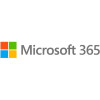New and improved features and fixed issues
Improvements
Excel
- Reduce unwanted fragmented conditional formatting rules: See speedup in workbooks with many unwanted fragmented conditional formatting rules. When a workbook is opened, this feature merges fragmented conditional formatting rules that are identical, within a contiguous range of cells, and with unchanged priority order. It excludes rules whose evaluation is based on a selection range such as "Above" or "Below Average", "Unique" or "Duplicate", "Color Gradients", etc.. and rules in PivotTables.
- Assign a sub-label as default when a parent label is selected: when using built-in confidentiality labels in Microsoft 365 Apps, administrators can specify a sub-label that is automatically applied when a parent label is selected. This takes effect only when users manually select a parent designation.
- Confidentiality label: range between files, emails, and meetings: Office applications can now filter out confidentiality designations based on document type. For example, Outlook emails no longer display designations that apply only to Word, Excel, and PowerPoint documents.
- Disable Azure Information Protection add-in by default: Office apps now automatically disable the Older Azure Information Protection add-in and use the built-in confidentiality identifiers to display and apply identifiers supported by Microsoft Purview Information Protection.
- The new confidentiality toolbar makes it easier to prevent data leaks: Confidentiality designations supported by Microsoft Purview Information Protection now appear next to the file name in the app title bar, making it easy to identify and comply with your organization's policies. The confidentiality toolbar is also available when saving new documents or renaming existing ones, so information security is always at your fingertips.
For more detailed information, see blog post
- Blocking XLL add-ins from the Internet: To address the increasing number of malware attacks in recent months, we are implementing measures that block XLL add-ins from the Internet.
You can find more detailed information in the blog post
- Tracking tasks with @mentions: Use @mentions in comments to create, assign, and track tasks in your workbook Learn more.
- Tooltips for formula evaluation: Select a part of your formula and a tooltip is displayed showing only the current value of the selected part.
More detailed information can be found in the blog post
Outlook
- Confidentiality label: range between files, emails, and meetings: Office applications can now filter out confidentiality designations based on document type. For example, Outlook emails no longer display designations that apply only to Word, Excel, and PowerPoint documents.
- Assign a sub-name as default when a parent label is selected: When using built-in confidentiality labels in Microsoft 365 Apps, administrators can specify a sub-name that is automatically applied when a parent label is selected. This takes effect only when users manually select a parent designation.
- Disable Azure Information Protection add-in by default: Office apps now automatically disable the Older Azure Information Protection add-in and use the built-in confidentiality designations to display and apply designations supported by Microsoft Purview Information Protection.
- Enhanced Confidentiality Designation Discovery in Outlook: Administrators can configure confidentiality designations to appear in subject lines when composing emails to enhance user discovery. The designation icons can also be customized.
PowerPoint
- Assign a sub-designation as default when a parent designation is selected: When using built-in confidentiality designations in Microsoft 365 Apps, administrators can specify a sub-designation that is automatically applied when a parent designation is selected. This takes effect only when users manually select a parent designation.
- Confidentiality label: range between files, emails, and meetings: Office applications can now filter out confidentiality designations based on document type. For example, Outlook emails no longer display designations that apply only to Word, Excel, and PowerPoint documents.
- Disable Azure Information Protection add-in by default: Office apps now automatically disable the Older Azure Information Protection add-in and use the built-in confidentiality identifiers to display and apply identifiers supported by Microsoft Purview Information Protection.
- The new confidentiality toolbar makes it easier to prevent data leaks: Confidentiality designations supported by Microsoft Purview Information Protection now appear next to the file name in the app title bar, making it easy to identify and comply with your organization's policies. The confidentiality toolbar is also available when saving new documents or renaming existing ones, so information security is always at your fingertips.
For more detailed information, see the blog post.
Word
- Assign a sub-name as default when a parent name is selected: When using built-in confidentiality names in Microsoft 365 Apps, administrators can specify a sub-name that is automatically applied when a parent name is selected. This takes effect only when users manually select a parent designation.
- Confidentiality label: range between files, emails, and meetings: Office applications can now filter out confidentiality designations based on document type. For example, Outlook emails no longer display designations that apply only to Word, Excel, and PowerPoint documents.
- Disable Azure Information Protection add-in by default: Office apps now automatically disable the Older Azure Information Protection add-in and use the built-in confidentiality identifiers to display and apply identifiers supported by Microsoft Purview Information Protection.
- The new confidentiality toolbar makes it easier to prevent data leaks: Confidentiality designations supported by Microsoft Purview Information Protection now appear next to the file name in the app title bar, making it easy to identify and comply with your organization's policies. The confidentiality toolbar is also available when saving new documents or renaming existing ones, so information security is always at your fingertips.
For more detailed information, see blog post
Bug fixes
Access
- Fixed an issue where users receive ERROR: 3155, ODBC--insert for a linked table [table name] when they insert a new row into a linked SQL Server table that has an INSERT trigger.
Outlook
- Fixed an issue that caused users to see an empty Off field if their profile contained an SMTP address with an asterisk.
- Fixed an issue that caused users with an Outlook.com account to be prompted for their password in their profile and receive the following error message: "You cannot log in with a personal account. Use your business, school, or university account."
- We fixed an issue affecting users of the Designation Inheritance feature that resulted in incorrect extraction of confidentiality designations from unencrypted files when shared document creation was enabled.
- Fixed an issue that caused Outlook to close unexpectedly when loop components were used in an email.
- Fixed an issue that caused Outlook to close unexpectedly when opening emails with data loss prevention policy applied.
- Fixed an issue where some settings were not moved between computers when switching to Inbox with Relevance.
- Fixed an issue that caused the subfolder search area to be interrupted when searching the online archive.
Project
- Fixed an issue where the Task Pane Add-In API for Microsoft Project does not return the correct value for the Summary, Milestone and Active properties.
Office Suite
Fixed an issue where spaces were not inserted properly when inserting text with dictation.


